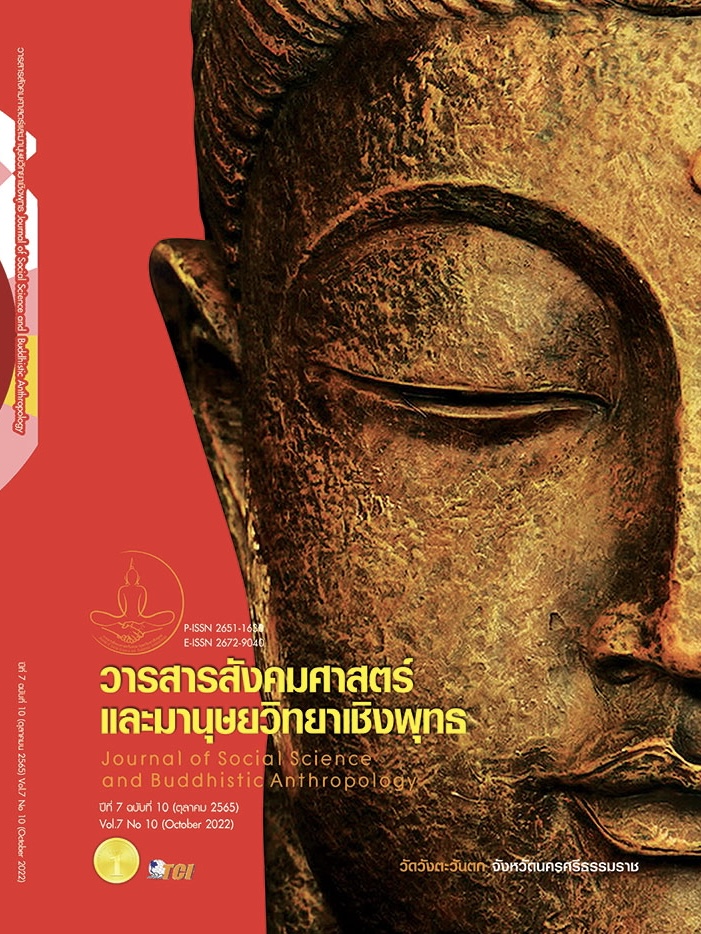THE EFFECTIVENESS OF AI LEARNING INNOVATION FOR ELEMENTARY SCHOOL CHILDREN
Keywords:
Learning Innovation, AI (Artificial Intelligence), Elementary School ChildrenAbstract
The objectives of this research article were to study the effectiveness of AI learning innovation for elementary school children. This research is a quantitative research. The samples included 1,065 elementary students of Prathomsuksa 1 - 5 in 2022 from 9 schools in Nakhon Pathom Province, obtained by purposive sampling from schools with their consent to research participation. Data collection was try-out of AI learning innovation for 2 times a week, 1 hour per each time, totally for 5 weeks. They were required to teach all 5 levels of students by using all learning modules completely; learning module consists of Module 1: Perception, Module 2: Representation & Reasoning, Module 3: Machine learning, Module 4: Interaction, and Module 5: Societal impacts. The research instrument was AI competency assessment form a 5-level rating scale. The quality was determined by the consistency index. All measurement items were greater than 0.6 and the internal correlation (ICC) was 0.802 at the 95% confidence level. Basic statistics were used for data analysis, i.e., mean, SD, and one sample t-test. The results revealed that most AI competency of Prathomsuksa 1 - 5 students was excellent. The results of comparison with the 70% criteria by one sample t-test, it was found that their AI competency was significantly higher than the criteria (p < .05) in all levels.
References
ปรณัฐ กิจรุ่งเรือง. (2558). การวิจัยเชิงปฏิบัติการแบบมีส่วนร่วมเพื่อพัฒนารูปแบบการเสริมสร้างศักยภาพอาจารย์นิเทศก์ และอาจารย์พี่เลี้ยง เพื่อพัฒนาศักยภาพด้านการเป็นพี่เลี้ยงวิชาการสำหรับนักศึกษาวิชาชีพครู. กรุงเทพมหานคร: สำนักงานคณะกรรมการการวิจัยแห่งชาติ.
Ali, S. et al. (2019). Constructionism, ethics, and creativity: Developing primary and middle school artificial intelligence education. In International workshop on education in artificial intelligence K-12 (EDUAI'19) (pp. pp. 1-4). MIT Media Lab.
Association for the Advancement of Artificial Intelligence (AAAI). (2018). AAAI Launches “AI for K-12” Initiative in Collaboration with the Computer Science Teachers Association (CSTA) and AI4All [Press release]. Retrieved July 17, 2010, from https://aaai.org/Pressroom/Releases/release-18-0515.php
Dodds, Z. et al. (2008). AI Education Colloquium. Technical Report & AI Education Workshop Papers WS-08-02. California: AAAI Conference on Artificial Intelligence.
Holmes, W. et al. (2019). Artificial intelligence in education. Boston: Center for Curriculum Redesign.
McCarthy, J. (2007). What is Artificial Intelligence. Retrieved July 17, 2010, from http://www-formal.stanford.edu/ jmc/whatisai/node1.htm
Kandlhofer, M. et al. (2016). Artificial Intelligence and Computer Science in Education: From Kindergarten to University. Retrieved December 11, 2020, from https://ieeexplore.ieee.org/document/7757570
Langley, P. (2019). An integrative framework for artificial intelligence education. Proceedings of the AAAI Conference on Artificial Intelligence, 33(01), 9670-9677.
Lenat, D. B. & Durlach, P. J. (2014). Reinforcing math knowledge by immersing students in a simulated learning-by-teaching experience. International Journal of Artificial Intelligence in Education, 24(3), 216-250.
Ner, R. H. (2020). Evolution and Revolution in Artificial Intelligence. Evolution, 11(2). 125-129.
Resnick, M. et al. (1996). Pianos not stereos: Creating computational construction kits. Interactions, 3(5), 40-50.
Sudjitjoon, W. et al. (2022). AI learning modules for elementary students. International Journal of Health Sciences, 6(S4), 12239-12249.
The Stanford d. school Bootcamp Bootleg (HPI). (2010). An Introduction to Design Thinking PROCESS GUIDE. Retrieved April 24, 2018, from https://dschool-old.stanford.edu/sandbox/groups/designresources/wiki/36873/attachments/74b3d/ModeGuideBOOTCAM P2010L.pdf
Touretzky, D. et al. (2019). Envisioning AI for K-12: What should every child know about AI? Proceedings of the AAAI conference on artificial intelligence, 33(1), 9795-9799.
West, D. & Allen, J. (2018). How Artificial Intelligence is transforming the world. Retrieved April 24, 2018, from https://www.brookings.edu/research/how artificial-intelligence-is-transforming-the-world
Downloads
Published
How to Cite
Issue
Section
License
Copyright (c) 2022 Journal of Social Science and Buddhistic Anthropology

This work is licensed under a Creative Commons Attribution-NonCommercial-NoDerivatives 4.0 International License.








